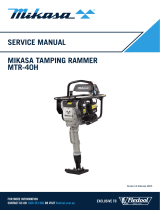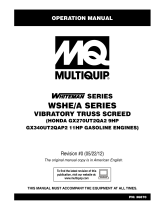Flextool FDBS SERIES is a double beam screed designed for efficient leveling and compacting of concrete surfaces in various applications such as tilt and precast panels, airport aprons, roadways, warehouse floors, light rail tracks, and bridge decks. With a powerful Honda engine and pretensioned beams, it delivers excellent performance and precision.
Flextool FDBS SERIES is a double beam screed designed for efficient leveling and compacting of concrete surfaces in various applications such as tilt and precast panels, airport aprons, roadways, warehouse floors, light rail tracks, and bridge decks. With a powerful Honda engine and pretensioned beams, it delivers excellent performance and precision.




-
 1
1
-
 2
2
-
 3
3
-
 4
4
Flextool FDBS SERIES is a double beam screed designed for efficient leveling and compacting of concrete surfaces in various applications such as tilt and precast panels, airport aprons, roadways, warehouse floors, light rail tracks, and bridge decks. With a powerful Honda engine and pretensioned beams, it delivers excellent performance and precision.
Ask a question and I''ll find the answer in the document
Finding information in a document is now easier with AI
Related papers
-
Flextool FDU-P1 User manual
-
Flextool FCP-87B FORWARD PLATE COMPACTOR Operating instructions
-
Flextool FCP-48 User manual
-
Flextool FDU-D2 User manual
-
Flextool FPV-45 User manual
-
 Flextool FDU-D2 Drive Unit User manual
Flextool FDU-D2 Drive Unit User manual
-
Flextool FVE44-2G PortaVibe Honda 1.5hp Petrol User manual
-
 Flextool ART-CUB Cub Floor Concrete Grinder User manual
Flextool ART-CUB Cub Floor Concrete Grinder User manual
-
Flextool NPS11011-UNIT Cub Grinder Art-Cub User manual
Other documents
-
 Mikasa MTR-40H Tamping Trench Rammer Owner's manual
Mikasa MTR-40H Tamping Trench Rammer Owner's manual
-
 Smith Performance Sprayers SMU-8 User manual
Smith Performance Sprayers SMU-8 User manual
-
 Kromschroder FDU 510, FDU 520 Datasheet
Kromschroder FDU 510, FDU 520 Datasheet
-
Tomahawk TVW10-P2 User manual
-
 Smith Performance Sprayers S103E User manual
Smith Performance Sprayers S103E User manual
-
 MQ Multiquip Projection Television PSH User manual
MQ Multiquip Projection Television PSH User manual
-
 MQ Multiquip PSH User manual
MQ Multiquip PSH User manual
-
 MQ Multiquip WSHE-A-SERIES Operating instructions
MQ Multiquip WSHE-A-SERIES Operating instructions
-
 MQ Multiquip WSHE-MSHE-SERIES Operating instructions
MQ Multiquip WSHE-MSHE-SERIES Operating instructions
-
Wacker Neuson HPG50A User manual













